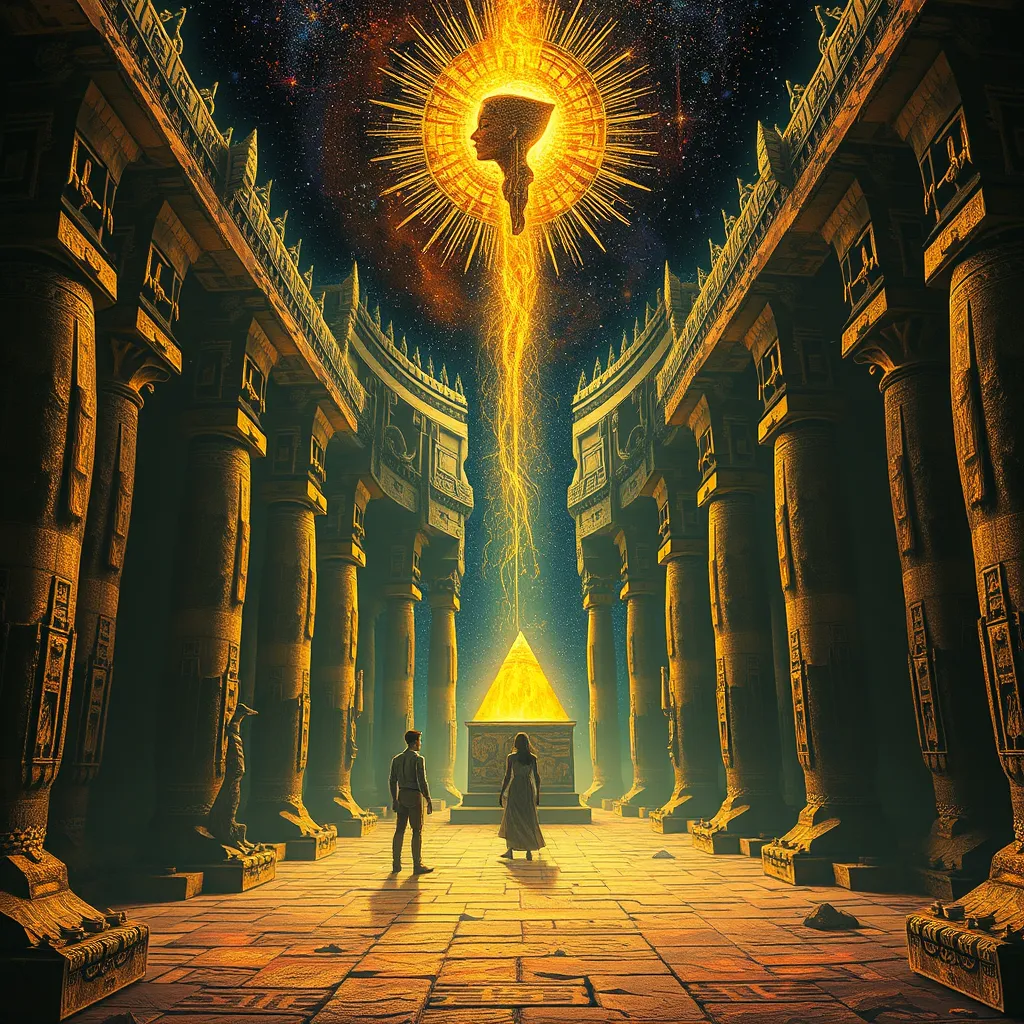The Duat: A Symphony of Spirits
I. Introduction to the Duat
The Duat, a term derived from ancient Egyptian beliefs, refers to the realm of the dead and is a central concept in their mythology. It serves as a metaphysical landscape where the souls of the deceased traverse in their journey toward the afterlife. The Duat is not merely a place of darkness; it is a complex and richly symbolic environment that embodies the ancient Egyptians’ understanding of life, death, and resurrection.
In ancient Egyptian cosmology, the Duat is significant as it represents the transition between life and the afterlife. The beliefs surrounding this realm highlight the Egyptians’ reverence for the dead and the careful preparations they undertook to ensure a safe passage for souls.
II. The Structure of the Duat
The Duat is often described as a vast, multi-layered landscape filled with diverse regions, each possessing unique characteristics. It is depicted as a realm that encompasses:
- Rivers: The Nile was believed to flow into the Duat, where it became the river of the underworld, filled with challenges and obstacles.
- Mountains: These served as barriers between different areas of the Duat, often depicted as dark and foreboding.
- Realms of Judgment: Central to the Duat is the Hall of Maat, where the deceased undergoes judgment by Osiris.
This intricate structure of the Duat reflects the ancient Egyptians’ understanding of the cosmos and the journey after death. Each region within the Duat represents different trials and experiences that the soul must navigate.
III. The Role of Deities in the Duat
The Duat is populated by a myriad of deities who oversee various aspects of the afterlife. Key figures include:
- Osiris: The god of the afterlife and resurrection, Osiris presides over the judgment of the souls. He is often depicted as a mummified king, symbolizing the cycle of life and death.
- Anubis: The jackal-headed god associated with mummification and the protection of graves. Anubis guides the souls through the Duat and oversees their embalming.
- Ma’at: The goddess of truth and justice, Ma’at plays a critical role in the judgment process, weighing the hearts of the deceased against her feather.
These deities not only represent different aspects of death and the afterlife but also serve as guardians and guides for the souls navigating the Duat.
IV. The Journey Through the Duat
The journey through the Duat is a perilous one, filled with challenges that the deceased must confront. Upon death, the soul embarks on a journey that includes several key stages:
- Assessment of the Soul: In the Hall of Maat, the deceased’s heart is weighed against the feather of Ma’at. A heart that is lighter than the feather signifies a virtuous life, allowing the soul to proceed.
- Encounters with Fearsome Creatures: The Duat is inhabited by various creatures, including serpents and demons, which pose threats to the soul’s progress.
- Guidance from Deities: Anubis and other deities assist the soul in navigating the obstacles within the Duat.
Only those who successfully navigate these trials are granted access to the Field of Reeds, a paradise where the soul can enjoy eternal peace.
V. Symbolism and Significance of the Duat
The Duat holds profound symbolism within ancient Egyptian beliefs. It represents:
- Transformation: The journey through the Duat symbolizes the transformative process of death, where the soul sheds its earthly ties.
- Rebirth: Successful passage through the Duat leads to rebirth, allowing the soul to attain a new life in the afterworld.
Culturally, the Duat influenced ancient Egyptian beliefs about the afterlife, emphasizing the importance of living a just life and preparing for the inevitable transition into death.
VI. Rituals and Practices Related to the Duat
To honor the journey through the Duat, the ancient Egyptians engaged in various funerary customs, including:
- Mummification: This process was believed to preserve the body for the afterlife, allowing the soul to recognize and inhabit it once again.
- Burial Practices: Tombs were constructed to house the dead, often filled with goods and offerings to assist the deceased in the Duat.
- The Book of the Dead: A collection of spells and texts designed to guide the deceased through the challenges of the Duat, this book was often placed in tombs.
These rituals underscore the Egyptians’ belief in the afterlife and their desire to ensure safe passage through the Duat.
VII. The Duat in Art and Literature
The Duat has been vividly depicted in ancient Egyptian art, showcasing its complex landscapes and the trials faced by the deceased. Common representations include:
- Scenes from the Book of the Dead, illustrating the judgment process and divine encounters.
- Wall paintings in tombs that depict the journey through the Duat, highlighting the importance of the afterlife.
In modern literature and media, the Duat continues to inspire interpretations of the afterlife, reflecting contemporary fascination with ancient beliefs and the mysteries of death.
VIII. Conclusion: The Legacy of the Duat
The Duat’s influence extends beyond ancient Egypt, leaving an enduring legacy on modern spirituality and concepts of the afterlife. Its themes of transformation, judgment, and rebirth resonate with contemporary beliefs about life after death.
As we explore the mysteries of the Duat, we find a rich tapestry of symbols and stories that continue to capture our imagination, highlighting the ancient Egyptians’ profound relationship with the afterlife and their enduring quest for understanding beyond death.




